It is known as the “Indian Sun” in the world of fashion. Yes, Banarasi Silk Saree is undoubtedly the desired fabric all around the world.
For me, it is a fabric that adorns my wardrobe. You can call me vain, but most of my saree loving friends will agree with me that a Banarasi Silk Saree is, without any doubt, a prized possession. The Banarasi Saree is the nine-yard long delight that is loved and cherished by the majority of the saree lovers like me!
About the blog: On our trip to Varanasi we had the opportunity to visit the Karigaars of Varanasi and to see how the Banarasi silk sarees are made. In this blog, I have written about the history of Banarasi sarees, how they are made and the problems faced by the weaver community these days. Banarasi silks are one of my favourite fabrics and I own sarees and dupattas made from it. This blog is not about the advertisement for any particular shop or brand of Banarasi sarees.

For the uninitiated, Banarasi Saree, also known as the Benarasi Saree is a fine variant of silk that originated in the ancient city of Varanasi. And as a Bengali, we have a special connection with Banarasi Silk saree. This exquisite clothing is the bridal wear for invariably all Bengali weddings.
YOU MAY ALSO LIKE : THE STORIES OF CHANDERI SAREES
Although the lehenga-cholis has been a recent favourite among the young and modern brides, Banarasi saree still holds its place as the wedding attire for the demure bride. Even I had the thought of wearing something ‘different’ in my wedding. I had thought of getting different silk for my wedding day. But somehow, I could not ignore the elegance of the Banarasi silk fabric and ended up choosing a Banarasi Saree for my wedding attire! That saree is still my prized possession and so is the saree that my mother got married in. Yes, that one is even dearer.

That was enough of my wedding and saree stories. I write this post to introduce you to the world of Banarasi Silk, the stunning ethnic wear that is loved by a lot of Indian women. The last time we were in Varanasi, we had visited the quarters of the silk weavers in Varanasi.
There we got a glimpse of how the Banarasi silk is made, how the intricate designs are made and a little about the origin and history of the Banarasi silk. We also saw how the painstakingly the motifs and designs are made on the fabric by the artists (yes, I would call them artists!) and how this centuries of tradition is now on the verge of dying.

The history of Banarasi silk actually made me delve deeper into its origin and I was clearly fascinated. As Mark Twain had rightly told that Varanasi is older than history, I found the stories of fabrics from Kasi (old name for Varanasi) going back to centuries. Not only Banaras silk, but cotton from Banaras was also famous worldwide.
So, in this post, I am going to tell you a little about the fascinating journey of Banaras silk from the past to the present and my love for the Banarasi Saree.
YOU MAY ALSO LIKE : GHATS IN VARANASI – WHERE LIFE COMES TO A FULL CIRCLE
Well, Varanasi was earlier known as Kasi and Banaras as well. I would be using all the 2 names of the city in this post.

Varanasi, Banaras or Kashi – the ancient city of spirituality
A tale of the Banarasi silk cannot be completed without the mention of the place of its origin. Uttar Pradesh, the state in Northern India, is known for its traditional silk sarees which are unique in weave, texture and motif. However, the pride of all the traditional sarees is definitely the Banarasi Saree, one of the most expensive sarees in India.
Uttar Pradesh is the rainbow land where the multi-hued Indian culture has blossomed from time immemorial. – Ruskin Bond
Varanasi is an ancient city. Situated on the banks of River Ganges, the city gets its name from Varuna and Assi, the 2 tributaries of Ganga. Varanasi is a city for the spirituals. It has also been known as the city of light, the centre of learning and the place to get enlightenment as per Hindu beliefs.

Ancient Sanskrit literature provides ample references that describe the significance of Varanasi as a place of pilgrimage. Kashi has been a centre for cultural and religious learning for several sects like Vaishnavas, Shaivas, Tantriks, Buddhists and Jains alike.
The Vedas, Upanishads and Puranas all refer to Varanasi as the place of Lord Shiva and the ultimate seat of Shaivism.
History of Banarasi Silk Saree
Banaras was once a world famous centre for handmade textiles. The fabrics made in Banaras have a continuous tradition in the cultural history of India. Infact, history and art have an inexorable relation. Unfortunately, the records of ancient art and crafts are either not very clearly known or not easily available.
Likewise, the origin of Banarasi silk is not very clear. It is obvious that it took centuries and generations of skill and expertise that got refined over time to make Banarasi silk what it is today.

Weaving in Banaras
The earliest mention of weaving in Banaras finds mention in the Rig Veda. Dating back to 1500 BC to 500 BC, the Vedic text mentions weavers as Tantuvayas who make clothes of various types such as cotton, silk and brocades. Brocades were then known as “Hirayana”.
What are brocades?
Brocade is a speciality of Banarasi fabric. It is literally a cloth of gold! The term brocade is derived from the Latin word brocade meaning to prick. It a weave in which patterns are created by driving the Zari thread between the warp at calculated intervals so that a new design in made. The pure form of Zari is actually a thread drawn of pure gold. However, today Zaris are now not made of gold or silver!
In Banaras, brocade is also known as kinkhab or Kamkhwab. It literally translates into a golden dream (kin means golden and khab means dream) or a fabric seldom seen in dream (kam meaning scarcely and khwab meaning dream). It was a heavy fabric woven all over with gold. It was truly something to dream of!
Kinkhab can be of four types:
- Cloth with pure gold or of silver.
- Brocade where gold or silver thread plays the most important part, with coloured silks interwoven here and there to emphasize the design.
- Bafta are mostly of closed woven colour silks, with only selected parts of the design in gold or silver thread.
- Very light brocades of silk, muslins with very little metallic thread, or with golden borders and end pieces sewn on them.
The reference of weaving from Kasi was found in tales of Jataka and in the writings of Kautilya and Patanjali. At that time, the weaves from Kasi was known as “Kasika Vastra” or “Kasiyani”. Even Ramayana mentions that the great king Ravana adorned himself with golden and brocade clothes.
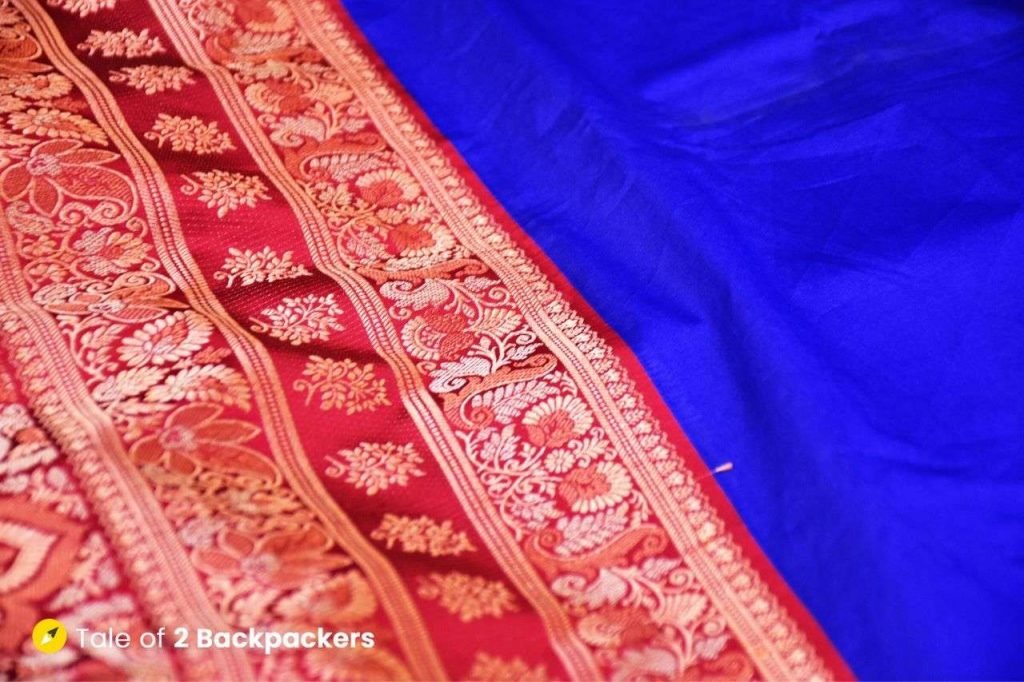
In Pali literature, Banaras or Benaras is described as one of the most reputed centres of textile manufacturing known for Kasiya. According to it, the Kasi fabrics were pleasant to touch and beautiful to the eyes. These fabrics were greatly popular among the nobility.
As per Buddhist legends it is believed that after the Mahaparinirvana of Lord Buddha, his mortal remains were wrapped in Banarasi fabric that emanated red, blue and yellow rays. These references in Buddhist literatures do point to the fact that brocade was existent in Varanasi since then.
As per some historians, the Ajanta Caves have various murals of the Gupta period that represent brocade specimens. The animal and bird motifs, floral patterns and geometrical styles point towards the early design of brocades.
The Banaras fabrics gained quite a popularity all over during the Gupta period, especially the dhotis and dupattas.
Silk was considered pure and was used by the Hindus for ceremonial purposes. That made the production of silk convenient in Varanasi.

The handloom industry enjoyed continuous fame and popularity all this time. Even after the advent of the Muslim rulers, the industry prospered and attained a new direction. The Muslim weavers learnt this art and they excelled in it. They were known as “Chira-i-Baaf” which means supreme weavers. The Muslim rulers interchanged ideas from Persia and Iran.
In Kashmir the brocade art was developed by Sultan Zin-ul-Abidin in the 15th century. He encouraged the interchange of weavers from Iran. These artisans later migrated to Delhi, Agra, Banaras and other parts of the country.
From the period of Akbar the earlier animal motifs on brocades were given up. Instead Persian designs were introduced by the Persian Nakshabandhs who were brought to India by Mughals. It is said that Emperor Jahangir was also an expert of brocades and Empress Nur Jahan had a great love for them.
Many foreign travellers also gave various accounts of Banaras silk and brocades. Ralph Fitch, an English traveler who visited Varanasi in 1583 described of the fabric being “fine as the filmy webs and spider weavers”. Another French traveller, Tavernier who visited India during 1665 AD wrote about the affluence of the Banaras silk and brocade industry. The Banarasi textiles were exported all over the world during the 17th century AD.
The erstwhile thriving community of Bunkaars or weavers is now on the verge of dying. With the advent of power looms during the British Raj, the workmanship of the weavers is no longer appreciated. The problems faced by these Banaras Silk weavers are now many.

The Bunkaars, Karigaars or Weavers – Faces behind the Banarasi Silk
The weavers in Banaras are mainly Muslims (Ansaris). They are also known as Karigaars meaning artists. There are also a few Hindu weavers involved in brocade production.
Karkhanas are the weaving centres and are spread all over the modern city of Varanasi. The Karigaars work in the well managed Karkhanas. The single loom weaver is known as the Bunkaar.
“The wondrous weaver wove the cloth, with the thread of karma as a warp, memory and attachment as weft”. – Great Sufi poet, Kabir
The tradition of weaving in India was celebrated by Kabir. He was born in Varanasi and belonged to weavers community ‘Julahas’, the low cast worker group.

There are 2 traditional weaving centres in Varanasi – one at Madanpura and the other at Alaipura. Both groups have their own techniques and design. Madanpura weavers are known for their traditional and fine work on the brocades, while the weavers of Alaipura are more experimental. They like working in new techniques and designs. The texture of fabric also differs in both the centres.
Banarasi silk saree is not only made in Madanpura and Alaipura in Varanasi but also made in and around Varanasi district. Places like NatiImli, Lallapura, Chittanpura, Ramnagar, Dulahipur, Pilikothi, Cholhapur and Dharsauna also produce Banarasi silk sarees and fabrics.
Making of Banarasi Silk Saree
Once we visited the Karkhanas in the alleys of Madanpura, we entered into a world of colours and fabric. The constant sound of khut-khut could be heard as we walked along the alleys. Those were the sounds of the looms. We peeked into a couple of Karkhanas to get a glimpse of the karigaars working.
Finally, we entered into one of the karkhanas. The man standing there explained briefly about the work that was going on there. At one corner, we saw white fabrics lying and 2 very cute children were sitting amidst the bale of clothes.


At another corner, we saw another karigaar dipping the white clothes in a vat of blue colour. The fabrics were getting coloured. What I saw did not quite impress me, but the end product would surely make me swoon over it.
We then went inside another room, where a few bunkaars were working on their loom diligently. The making of the designs require a great deal of concentration. In another room, we saw a few other working on zari designs on a piece of saree.
Every Karigaar here is an artist and that is evident by the masterpieces they produced.
As we started talking with the Karigaars, we came to know that usually it takes 15 to 30 days to make a Banarasi silk saree. Infact, it depends on the complexity and design of the saree. For a heavily decorated Banarasi saree, it might even take 6 months or more to produce one piece.
3 or 4 people are needed together to weave a Banarasi silk saree.

Traditionally, the weaving was done with Naksha drawlooms, which was introduced in India during 990 AD. The heddle system as we see today was introduced in the 16th century by Khwaja Abdul Samad Kashmiri, who came to Banaras during Akbar’s reign. With the help of the heddle loom, it became easy for the weavers to introduce various floral and artistic designs with ease.
The jacquard loom was introduced in Benaras during the 1930s. Jacquard looms were a great help to the weavers.

Designs for the weaving are made by artists known as Nakshaband. They are master craftsmen in Benaras who are widely respected by the local weavers of Benaras. They create the beautiful designs that are to be replicated on the Banarasi silk sarees. The designs are made on graph paper usually white in colour. The colour concept is also made along with it. For jacquard loom, the graph is punched on hard cards. Different colours and threads are used then to knit the punch cards on the loom.
It is interesting to note that each religion had its own norms regarding the colour, material and design of the Banarasi silk. The Hindus liked bright colours like red, yellow and orange. The Muslins on the other hand preferred mixed fabric and pastel colours like lavender, sky blue and magenta. Animal and human motifs were not favoured by the Muslims.

As for colouring the fabric, earlier natural colours were the norm. Vegetable dyes were used which produced fast colours, remained vivid and beautiful for generations. Remember, I still have my mother’s Banarasi silk sari in good condition. The red colour still looks fresh! But today, chemical colours are used widely.
The basic raw material is mainly the mulberry silk thread.


Types of Banarasi Silk Sarees Based on fabric
Pure Silk or Katan: In this pure silk sarees are made with beautiful patters. Earlier handlooms made these wonders, but now powerlooms have replaced the handlooms.

Georgette saree: It is plain weave saree having light weight and open texture fabric.
Organza: it is richly woven fabric having beautiful golden brocade patterns and designs.
Shattir: It is used to make the contemporary Banarasi silk designs.
Types of Banarasi Saree Based on design
Banarasi Silk Jamdani: This is said to be the finest Banarasi silk saree. Here the silk saree is brocaded with cotton thread and rarely with zari threads. Cutwork sarees are less expensive versions of Jamdanis.
Jangla saree: In this silk threads are used to make a saree with intricate patterns and motifs. This is said to be the oldest of Banaras brocades.
Jamwar Tanchoi Saree: This saree is designed by using extra colourful weft for silk pattern. The brocade design takes inspiration from the Jamwar shawls of Kashmir.

Butidar Saree: In this the most attractive feature is the pattern of gold or silver or both on the silk.
Problems faced by the weavers
One of the major problems faced by the weavers is the availability of raw materials. Good quality yarn is no longer available at reasonable prices. The price of the yarn is quite higher and government intervention has not yet helped.
The major problem is the competition from power looms. There has been a phenomenal growth in the number of power looms inspite of regulations. One of the weavers told us that a Banarasi silk saree that takes around 2 months to complete by handloom is done in a day in power loom.
Unfair trade practices are also another reason for the decline of this art. Traders often sell the power loom made sarees as handloom made. A naïve buyer does not usually know the difference between a handloom made saree and a machine made one.
These are cheaper variants of machine made Banarasi sarees.

The karigaar we met told us how we can understand whether the saree is handloom made or not. Handloom made saree will have small holes at the sides while a power loom one will not. That’s an easy way to check, we thought!
Finally, proper marketing is also a reason of the decline of the handlooms. There are middlemen and often the weavers do not get proper price for their product.
These are the main causes of the decline of handloom in the Banarasi silk industries. The younger generation is no longer interested in carrying the traditions. The work is tedious and involves time and the pay is low. On the other hand, a saree made by power looms are easily made without much manual effort. We heard from the weavers that a few of them have abandoned their looms and embraced other livelihoods. After all, they will have to fend for themselves as well.
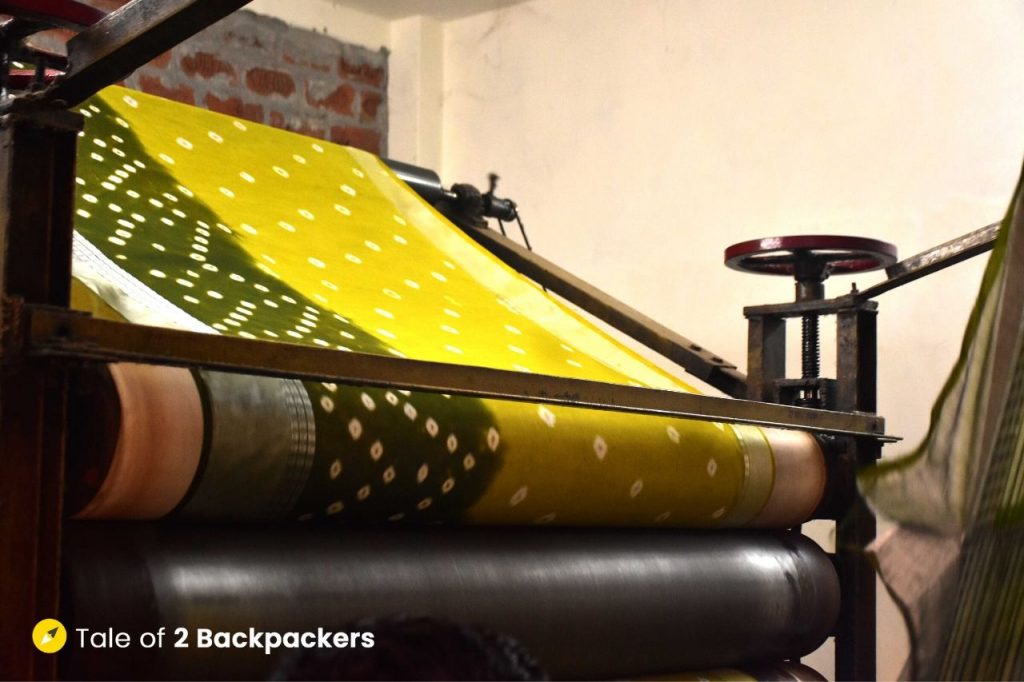
Once there was a thriving population of 6 to 8 lakhs weavers in Varanasi which has now reduced to merely 50000. As you walk across the streets of Varanasi or look around the Godowali street, you will see a number of shops selling Banarasi silk sarees. The road leading to the Kashi Vishwanath Temple is also full of shops. Ardent shopkeepers will approach you to take you to the factories to see the Banarasi sarees. They will offer you the most authentic sarees at the cheapest rate. But know for yourself, an authentic Banarasi saree is made after a lot of hard work. It is not cheap. So much talent and hard work is given in producing a single Banarasi saree. It is quite natural that remuneration should at par the effort.

I seriously do not know how the problem can be tackled. We as consumers can be careful while buying handloom sarees. The government has also issued the handloom tag and the GI tag for Banarasi silk saree and brocades since 2009. It is easier to identify the handloom sarees from the tags now.
We heard the stories, saw the people at work. We saw both the handloom and the power looms. There is one thing we understood that this ancient art of weaving has been nurtured over generations. The Banarasi silk and brocades have got elegant with time. The quality of an authentic Banarasi silk is unmatched. It would be a shame if this art ever dies.

Some fun facts about the Banarasi Silk Sarees
- An ideal Banarasi saree has about 5600 thread wires.
- A single design of Banarasi saree required hundreds of perforated cards to implement a unique design.
- An authentic Banarasi saree takes about 15 days to 6 months to make. For even complex designs, more time is needed.
- Hindu epics Ramayana and Mahabharata mention about Banarasi sarees. They were written thousands of years ago. It is said that Ravana, the king of Lanka (present-day Sri Lanka).
- Buddhist tales of Jataka and other texts also mention about the exquisite weaves of Kasi.
- In olden days, Banarasi silk sarees were made only for royalty and the nobility. Silver and Gold were used for weaving. Ramayana mentions that Ravana used to wear golden dhotis.
- Banarasi saree is heavy because of the rich embroidery and the zari work.
- Banarasi Silk Sarees are considered to be wedding trousseau in many Indian cultures.
- The price range of a genuine Banarasi silk saree (handloom made) can be somewhere between INR 8000 to 3,00,000. Anything lesser than that has some quality compromised.
There is a beautiful documentary on the weavers of Varanasi or the Bunkars. It is available on Amazon Prime Video. We, however, have the trailer for you here. It surely would leave goosebumps on you after watching.
The Untold Stories of Banarasi Sarees in Photographs
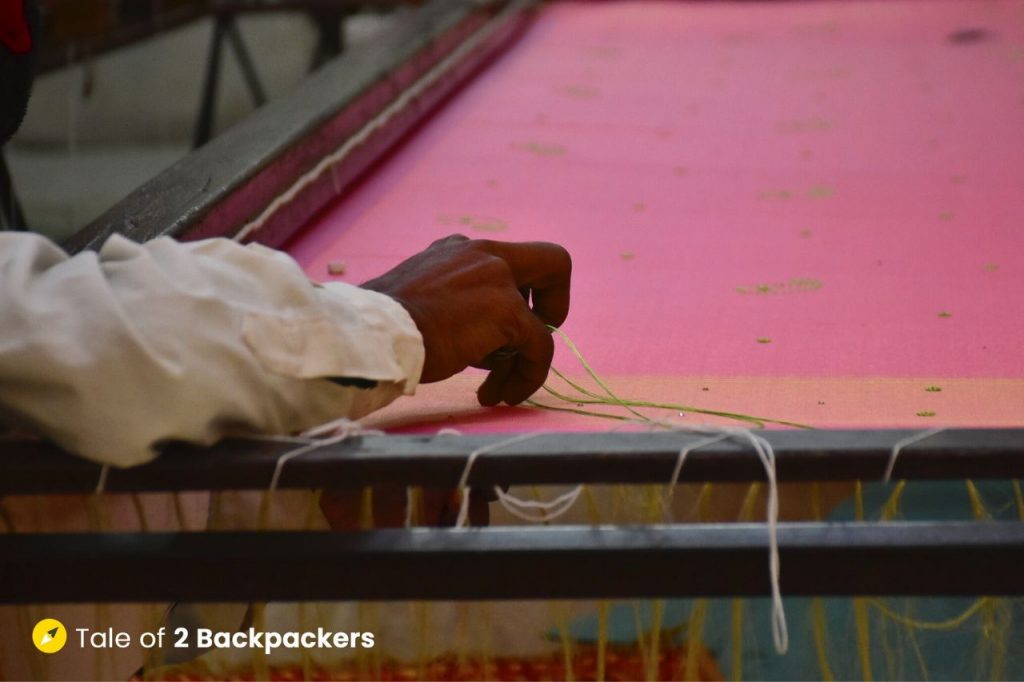



Now that we have shared some stories behind the exquisite and beautiful Banarasi silk sarees, do let us know your thoughts about the same. We always wonder that with time most of our traditions are getting lost. May be , we are so focused with our lives that we fail to appreciate the work done by the traditional artists. we have observed this in the case of other handicrafts like Dokra and Majuli masks as well.
Do you have any thoughts on how we can preserve the traditional handloom and save the community? Please share your thoughts in comments below.
Also, this time I would shamelessly ask you to share the post with as many people as you can so that more and more people around the world get to know about these traditional handlooms.
Pin it for a later read!

Sharing will help!




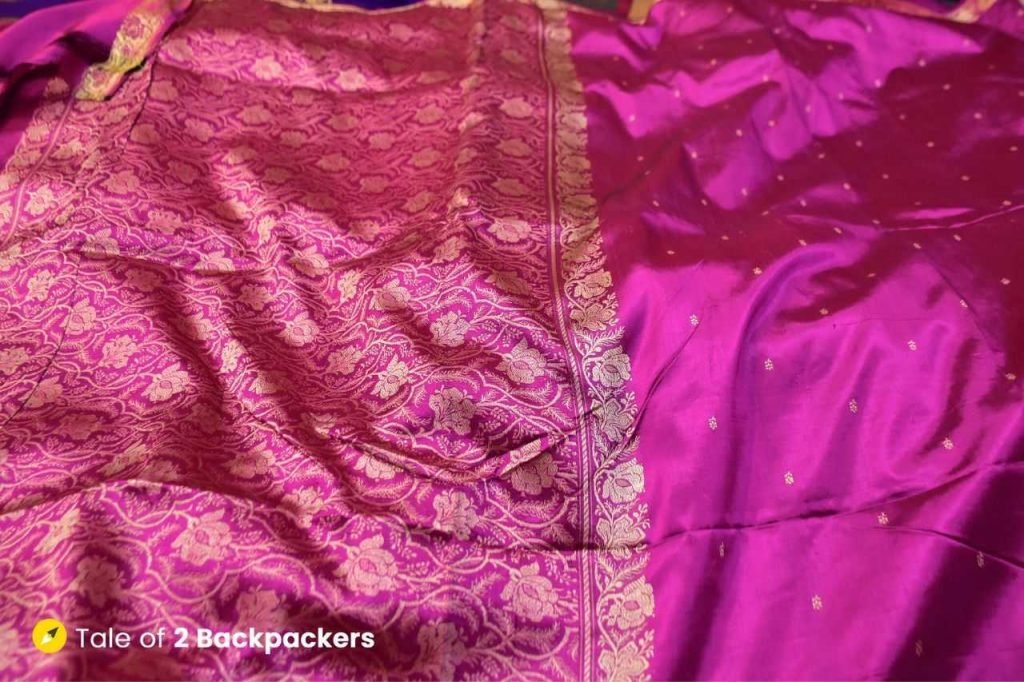

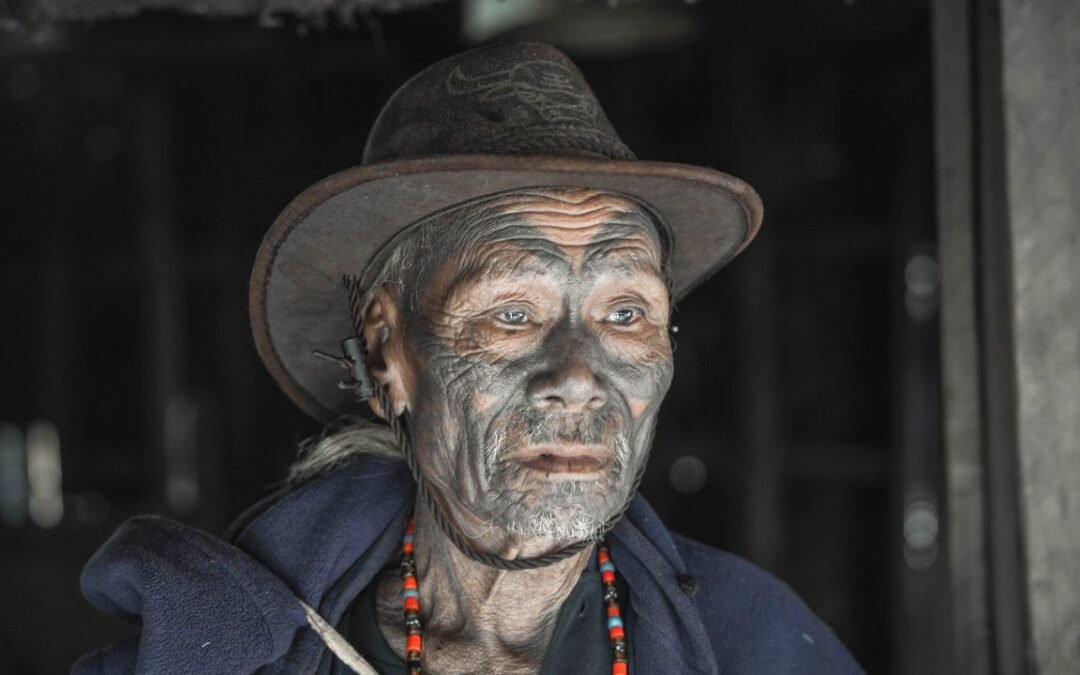
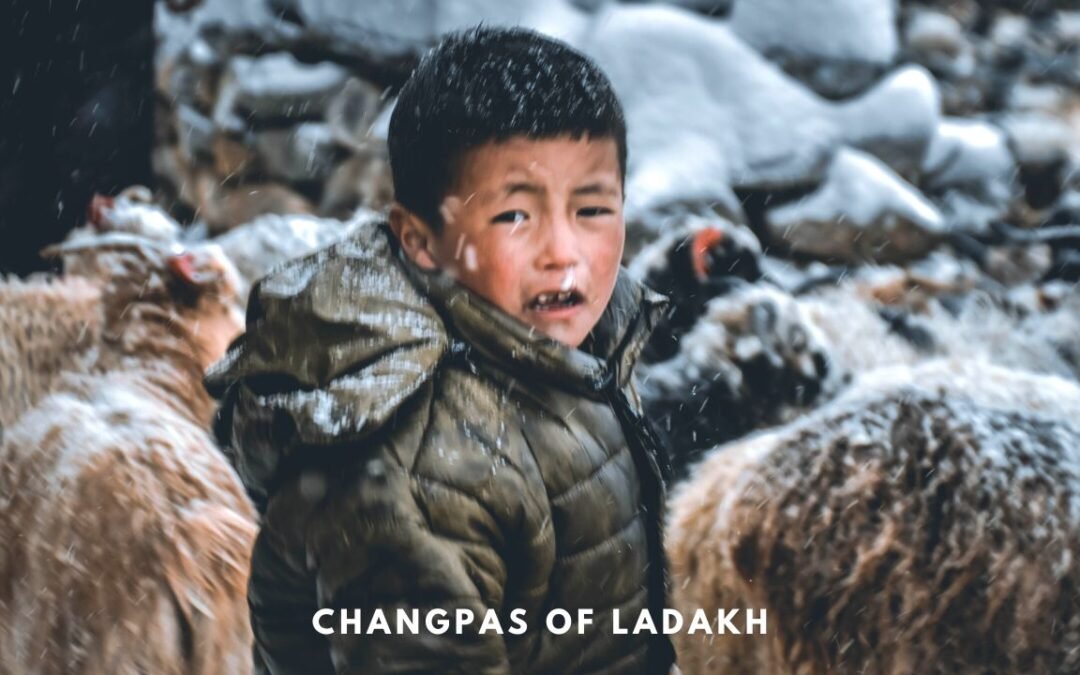

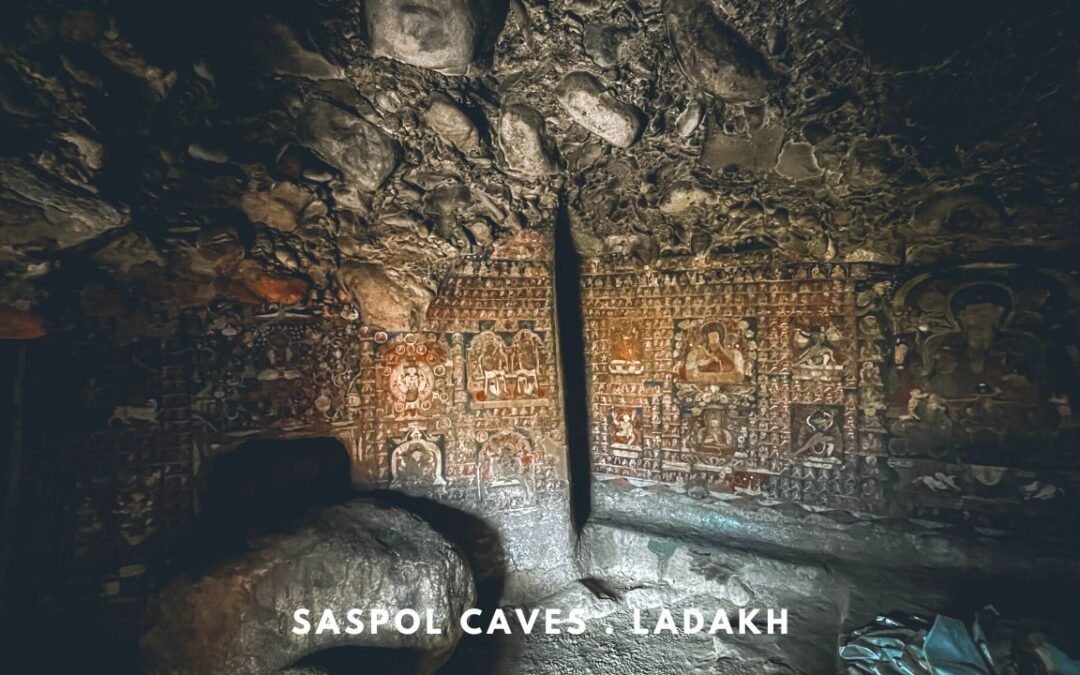


Hands itching…. Need to buy some saris now. Thanks.
I can totally relate! 🙂
I can say that i know somewhat alot about Banarasi Silk Sarees now. So informative! But most importantly I relate to this because on my trip to Varanasi, I’d gifted my mom for the very first time, and it was a yellow banarasi. ❤️❤️
That must have been such a beautiful experience, Raj! I hope aunty loved the saree!
This is such a detailed and informative post about Banarasi Sarees. I loved Banarasi and I think it is one kind of fabric or saree material everyone loves to possess it. The way you described and the pictures are incredible. Loved it ..
Thank you, Pamela!
Indian saree is one of the most elegant attires in the world. And Banarasi sarees have become immensely popular today. Think of a celebration or traditional function and the Banarasi saree instantly comes into mind. Banarasi silk saree is a definite must-have for all Indian women. Thanks for sharing detailed information about Banarasi Silk
Thanks Sundeep! Glad that you liked the post.
I loved Banarasi Silk Saree. I bought so many of them last year when I visited Varanasi. They are so colourful and pretty and I know that a lot of effort goes into making it.
Thank you, Raksha!
This post reminded me of the artisans in Chanderi that we visited together! I’m not too much into handloom but it was definitely lovely to read this post. Benarasi silk is definitely a popular choice across the country, even my mom is a hardcore lover!
Yes, I remember that too! Thanks Avantika!
Hey guys, very informative article. I am surely gonna share it with my friends.
Thank you, Priyanka!
This post of yours made all my saree cravings alive .. I am a big fan of saree but investing in a heavy banarasi could only happen during ritual like marriage that too only once .. organza banarasi must be so beautiful.. infact with this I wish to pay another visit to Varanasi to explore the benarasi saree..Loved reading your detailed post .
I totally agree with this. Owning a Benarasi Saree (an authentic one) is a costly affair. And that goes for most of the handloom products.
wooaaah… such detailed and informative blog… i thoroughly enjoyed reading it. Thanks or writing it.
Thank you so much, Nidhi! We are glad that you liked it!
Hey Amrita, this story indeed shed light on the efforts it takes for one banarasi saree to be made. Also, yes, their industry is falling down and it pains to see people not get their due. I’m glad you showcased the history of the place and this saree along with some facts. Also, appreciate how you mention the best way to find authentic sarees!
Thank you so much! With power looms at play, it has indeed become very difficult for the weavers. And it is almost everywhere.
Yes it is indeed difficult to keep on the handloom works when there is more competitive power looms in the play. But the ethnicity still persists in the handloom. And the details right from the Ramayana, I really didn’t know that. Very detailed and informative post. ❤❤❤
Thank you, Jayashree! Handloom textiles are always better qualitywise. But the problems are also so many! I sincerely hope that these weaving forms live on.
Great article, as always.
I have plans to visit the weavers for some authentic handloom banarasi sarees.
Can you pls share exact location to find handloom products? I would prefer to buy directly from the weavers.
Thank you Rakesh! Yes, you may buy directly from the weavers as well.
Hi There, This blog is very informative, crisp and relevant.
Thank you!
This blog is awesome. I love sarees. After reading this, I have a crave for Benaras sarees. The colour of the sarees are a treat to the eyes. Wish I would own one.
Thank you so much. Yu can definitely buy one!
Any suggestions of ay particular location, shop or weaver, weher w can buy one such beauty. And indeed your log for the the entire banaras is wonderful and super helpful
Thank you so much Nidhi.
The pure banarasi saree weave and its air have consistently been related with sovereignty, affectedness, and eminence. Motivated by our Indian culture, Banarasi sarees are currently arising to be the most preferred one among a ton of unfamiliar ladies as well.
The word “sari” or saree is derived from the Prakrit word “Sattika” which was mentioned somewhere in early Buddhist literature. The famous Banarasi silk saree was introduced by Mughals with exotic prints, motifs, and intricate weaving craftsmanship. The Banarasi silk that is available today in the market is actually a combination of two different cultures i.e. Indian and, Mughals. Initially, silk for weaving these sarees was imported from China but now the silk and yarns are sourced from India itself. The use of embellishments, unique motifs, yarns, threads, and rich fabrics was gone a huge transformation with the lapse of time. At present, every region of India has developed its own peculiar stitching style with a slight modification.
Thank you so much for this delightful information.
Thank you for this beautiful article. I’m reading up all your articles in this blog about Varanasi. I’m visiting Varanasi for the first time in July. Can you please give names of the stores or the weavers’ address that I can buy Banarasi sarees from?
Thank you!
Shreya
This is an extremely well written post about the history of Varanasi and the ‘artists’ behind the world famous banarasi sarees. I have not visited Varanasi yet, but this post makes me wanna visit there as soon as possible.
Thank you so much!